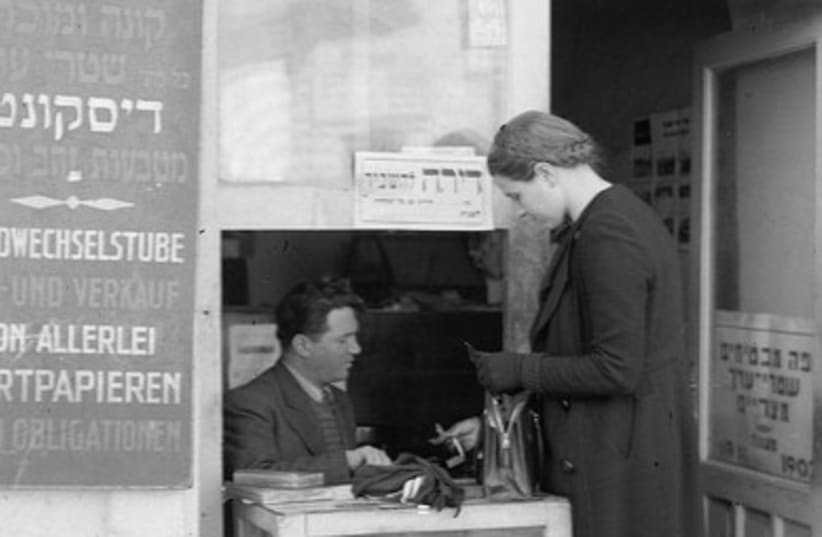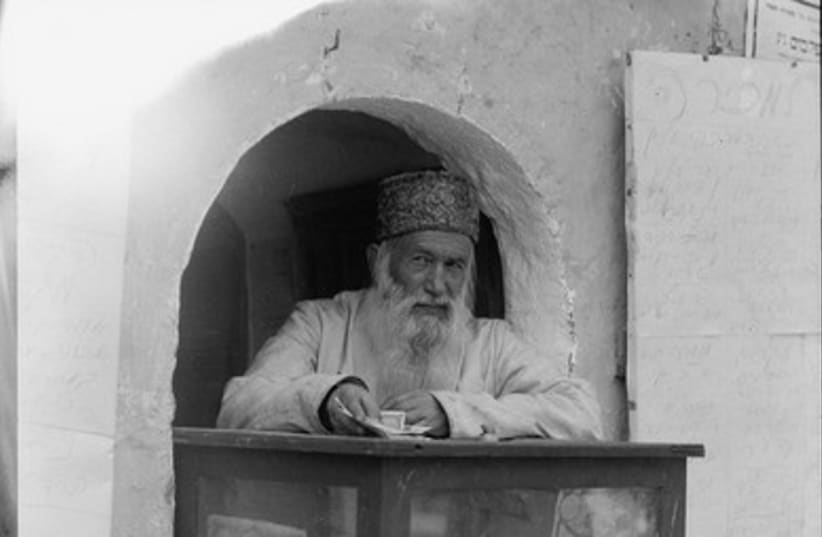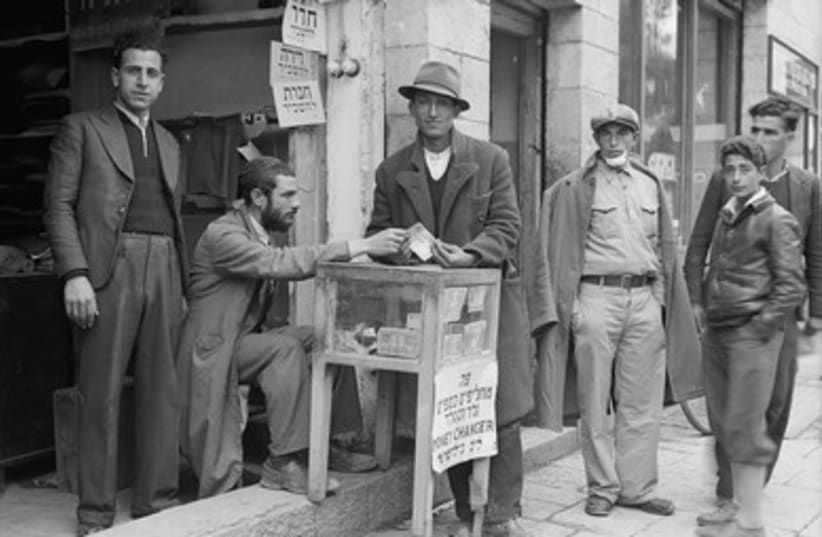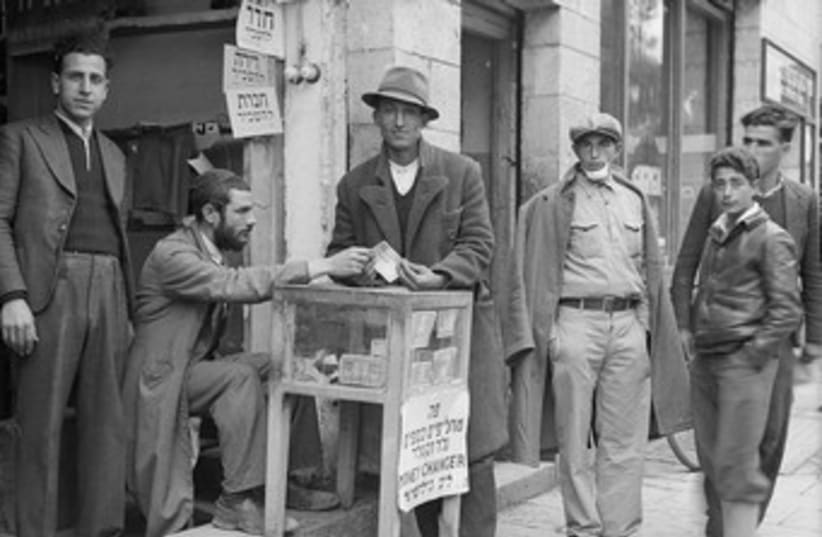



In January we presented a feature on Jewish money-changers in Jerusalem 75-80 years ago. The signs behind them showed that they provided full financial services including property sales and rentals, mortgages and stocks. Recently, we came across this picture, different from the previous ones for several reasons. First, it shows a woman customer. Second, a sign on the door advertises that the shop guarantees Egyptian bonds. Previous posting: For millennia the commerce of the world has had to deal with different currencies. The Bible refers to various coins, often a name referring to a specific weight. Every country, province, king or governor minted a local coin. Travelers had to exchange one currency for another to do business.Jewish pilgrims to the Temples in Jerusalem had to convert their coins to local currency to pay for their sacrifices or lodgings. Agricultural tithes were converted to coins which were brought to Jerusalem. The Talmud refers to a money changer as a shulchani (literally a "person at the table").According to the New Testament, the money changers were driven from the Temple by Jesus. The allegedly unsavory character of money changers continued into the Middle Ages as seen by Shakespeare's depiction of Shylock.Over the centuries, the Forex (foreign exchange) professionals also served as bankers and loan officers. When Jews were dispersed throughout Europe and Asia, the profession was an easily portable trade. Jewish ties between communities facilitated letters of credit. The Rothschild banking dynasty, for instance, begun in the 16th century, had family branches in Austria, Germany, France, Italy and England.As recorded by the American Colony photographers, Jewish money changers set up their shulchan on the street. More photos can be viewed at http://www.israeldailypicture.com.
